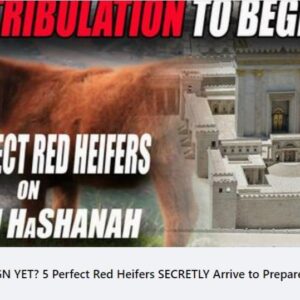Post #81 THE MOUNTAIN OF MOSES. MOUNT SINAI IS IN SAUDI ARABIA. [KNOW YOUR BIBLE HISTORY] PART 5
Watch new and undeniable archaeological evidence of the real location of Mount Sinai! Based on our research, we believe that Jabal Maqla in Saudi Arabia is the best candidate for Mount Sinai.
When considering which mountain is the true Biblical Mount Sinai, there are some important criteria to use as a guideline. The Bible and Jewish historians provide information that we can use to narrow down potential candidates.
1. There must be a cleft somewhere near the top of the mountain. This is the location where Moses saw God and received the Ten Commandments from God (Exodus 33-34).
2. There must be a plateau partway up the mountain’s slopes, in which Moses, Aaron, Nadab, Abihu, and the seventy elders could all comfortably fit (Exodus 24).
3. There must be a large, open area in which approximately 2-3 million Israelites and their flocks of animals could camp (Exodus 19).
4. There must be a noticeable cave at the mountain that the prophet Elijah could have identified and used as a place of shelter (1 Kings 19).

5. There must be evidence of water-flow coming down from the mountain, as the Bible describes (Deuteronomy 9).
6. Near the last encampment before reaching the mountain, there must be a large open plain where Israelites could have battled the Amalekites (Exodus 17).
7. Also near the last encampment, there could be a large rock with a split, matching the story of Moses striking a rock with his staff, resulting in a rush of water pouring forth to quench the thirst of the Israelites. (Exodus 17).
8. The mountain should be near the ancient city of Midian, according to a line of historical sources. The city of Al-Bad in Saudi Arabia is believed to be where Midian once was.
9. There should be evidence of a population communicating in petroglyphs and ancient proto-Hebrew inscriptions.
10. There should be evidence of an altar and/or stand where the golden calf was placed and worshiped (Exodus 32).
11. There should be evidence of a mass burial where the bodies of the Golden Calf worshipers were placed.
12. There could be something resembling an altar below the mountain made of uncut stones, according to specifications given by God to Moses in Exodus 20.
13. There could be evidence of 12 pillars near the altar (Exodus 24). It may be organized in three rows of four, as that was the pattern on the Israelite priests’ breastplates.
14. There may be evidence of the fiery phenomenon at the top of Mount Sinai as described in the book of Exodus.
15. Josephus describes Mount Sinai as the highest peak in the region, specifically near the ancient city of Madyan. It is possible that the entire range was referred to as “Mount Sinai” or “Mount Horeb” in his time.
Refer to post #57 #58 #59 #60 #80

![Post #81 THE MOUNTAIN OF MOSES. MOUNT SINAI IS IN SAUDI ARABIA. [KNOW YOUR BIBLE HISTORY] PART 5 BIBLE](http://kingdomprepare.com/wp-content/uploads/2020/05/post-40-03.jpg)


